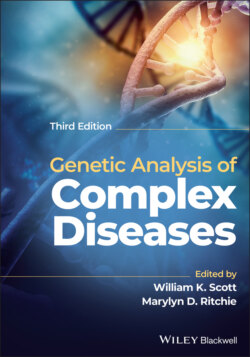Читать книгу Genetic Analysis of Complex Disease - Группа авторов - Страница 39
When Genes and Chromosomes Segregate Abnormally
ОглавлениеFailure of meiosis at either phase (meiosis I or II) is termed nondisjunction and leads to aneuploidy, or abnormal chromosomal complements. The most well‐known aneuploidy is Down syndrome. Most cases of Down syndrome are caused by an extra copy of chromosome 21, but ~5% of cases are caused by a translocation such that the trisomy is not of the whole chromosome. Down syndrome is often called trisomy 21 because most individuals with Down syndrome have a total of 47 chromosomes, with three copies of chromosome 21. A monosomy, or the absence of a second member of a chromosome pair, is rarely viable. A noted exception is Turner syndrome, in which a female has a total of 45 chromosomes, including a single X chromosome. Nondisjunction events that lead to abnormal chromosome complements may occur in the egg or the sperm. However, in contrast to male sperm, which are produced throughout the lifespan, female egg cells are suspended in meiosis II since shortly after that female’s conception. These eggs are subject to aging over the female lifespan, and errors of nondisjunction are more likely to occur.
Triploidy and tetraploidy are the terms for the presence of one or two entire extra sets of chromosomes, leading to a total of 69 or 92 chromosomes, respectively. These anomalies, which usually are not viable in humans, are due to errors in fertilization such as dispermy (two sperm fertilizing an ovum) or failure of the ovum’s polar body to separate.
